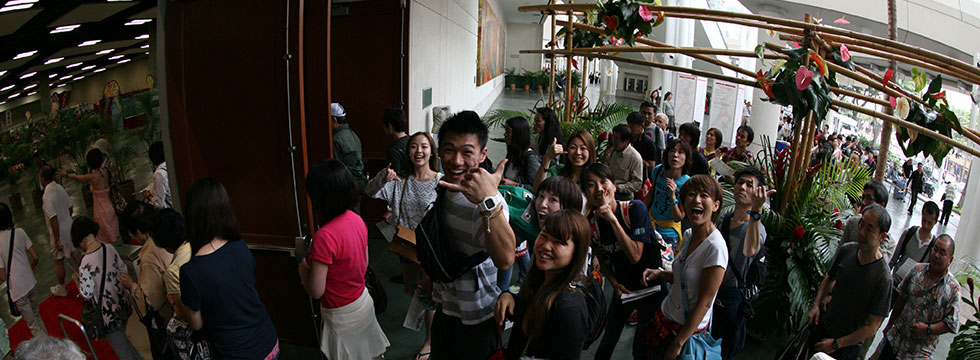Aviator – Unleashing the Thrill of Aviation _ Explore Our Expert Insights
May 5, 2025 8:20 am Leave your thoughts
-
Aviator – Unleashing the Thrill of Aviation – Explore Our Expert Insights
-
Discovering the Innovation in Flight Technology
-
Latest Advancements in Aircraft Design
-
Emerging Technologies for Safer Air Travel
-
Navigating the Challenges of Pilot Training
-
Essential Skills for Aspiring Pilots
Engaging with the realm of flight offers an exhilarating experience that transcends mere transportation. With advancements in technology and a growing community of enthusiasts, delving into this field aviator has never been more accessible or rewarding. Whether you are an aspiring pilot or simply captivated by the skies, there is a wealth of knowledge waiting to be uncovered.
From understanding intricate aerodynamics to mastering navigation techniques, the journey begins with a strong foundation of theoretical knowledge. Embracing flight simulators can serve as an excellent starting point, providing practical skills and fostering a deeper comprehension of aircraft operation without the immediate financial commitment associated with real-life piloting.
For those who seek tangible experience, enrolling in flight training programs can be a pivotal step. These structured courses not only offer hands-on instruction but also introduce the critical nuances of safety regulations and emergency procedures. Engaging with seasoned instructors can provide mentorship and insights that books alone cannot convey, forging a path toward certification.
Understanding the diverse types of aircraft available is crucial in tailoring your aviation journey. Whether considering small single-engine planes for leisure or more sophisticated models designed for business travel, each category presents unique characteristics that cater to various preferences and purposes. Comprehensive research into airframes, performance metrics, and operational costs can significantly enhance decision-making.
Lastly, fostering a network of fellow aficionados can enrich your endeavors. Participating in aviation clubs, attending airshows, or joining online forums allows for exchanging experiences and advice. This collaborative spirit not only enhances learning but also sustains motivation in pursuit of aerial aspirations.
Discovering the Innovation in Flight Technology
Recent advancements in aeronautical technologies have transformed how we understand and experience flight. From sustainable fuels to enhanced navigation systems, the industry is on the cusp of a revolution that promises to redefine air travel.
One significant development is the adoption of electric propulsion systems, which aim to reduce dependency on fossil fuels. Companies like magniX and Ampaire are pioneering electric aircraft capable of regional travel. For instance, magniX’s EP-500, a fully electric powertrain, allows for lower operational costs and decreased environmental impact.
| magniX | EP-500 | 300 | 6 |
| Ampaire | EEL | 250 | 9 |
| Pipistrel | Alpha Electro | 120 | 2 |
In parallel, the rise of autonomous flight systems has reshaped pilot roles and enhanced safety protocols. Companies like Boeing and Airbus are investing heavily in AI and machine learning technologies for real-time data analysis and decision-making assistance. This evolution not only improves flight safety but also optimizes route management and fuel efficiency.
Moreover, the integration of advanced materials such as carbon fiber composites results in lighter, more fuel-efficient aircraft. These materials have a significant impact on performance and durability, offering a competitive edge in an industry increasingly focused on sustainability.
Investing in simulation technologies is essential for pilot training. Tools like virtual reality (VR) and augmented reality (AR) create immersive training environments, significantly enhancing situational awareness and decision-making skills prior to actual flights.
As innovations continue to proliferate, regulators must adapt to ensure safety and compliance with emerging technologies. Ongoing collaboration between aviation authorities and tech developers will be crucial in establishing guidelines that can keep pace with rapid advancements.
Latest Advancements in Aircraft Design
Recent innovations in aircraft design have significantly improved efficiency, safety, and sustainability. One noteworthy development is the integration of advanced composite materials, such as carbon fiber reinforced polymers, which offer durability while reducing weight. This shift enhances fuel efficiency and lowers operational costs.
Another critical area of advancement involves aerodynamics. The implementation of blended wing body (BWB) configurations minimizes drag and optimizes lift, allowing for smoother flight characteristics. Research shows that BWB designs can reduce fuel consumption by up to 20% compared to traditional models.
Moreover, the advent of electric and hybrid propulsion systems marks a transformative phase in aircraft technology. These systems not only diminish carbon emissions but also reduce noise pollution, contributing to environmental sustainability. Companies like Boeing and Airbus are investing heavily in prototypes that leverage electric motors for short-haul flights.
Digital technology is also reshaping aircraft design processes. The use of computer-aided design (CAD) and simulation software enables engineers to create and test virtual models, drastically reducing the development timeline. Additionally, artificial intelligence plays a pivotal role in optimizing performance and predicting maintenance needs, enhancing overall flight reliability.
Furthermore, the focus on cockpit innovations, including advanced avionics and automated flight systems, is transforming pilot experiences. These enhancements improve situational awareness and decrease pilot workload, allowing for greater efficiency during operations.
In summary, the latest advancements not only push the boundaries of aircraft capabilities but also align with global sustainability goals, setting the stage for a new era in the industry.
Emerging Technologies for Safer Air Travel
The continuous evolution of technology significantly enhances safety measures within the aviation sector. Several innovative approaches are currently being implemented to minimize risks associated with air travel.
- Artificial Intelligence: AI algorithms are revolutionizing safety monitoring by analyzing vast amounts of flight data in real-time to predict potential failures. This proactive approach allows maintenance teams to address issues before they escalate.
- Drone Surveillance: Unmanned aerial vehicles are being utilized for runway inspections, reducing the incidence of human error. Drones provide detailed imagery and data, allowing for timely asset management and maintenance tasks.
- Blockchains in Record Keeping: Blockchain technology enhances transparency in maintenance logs and flight data, ensuring tamper-proof records. This leads to more reliable safety audits and fosters accountability among stakeholders.
- Enhanced Weather Prediction: Advanced meteorological systems leverage big data to provide precise weather forecasts. These insights enable flight crews to make informed decisions, increasing safety during adverse weather conditions.
Integrating these innovations not only improves operational efficiency but also significantly contributes to risk mitigation strategies in the industry.
- Virtual Reality Training: Pilots and crew undergo training simulations, experiencing emergency situations in a controlled environment, which substantially improves their reaction times and decision-making skills.
- Cybersecurity Measures: As reliance on digital systems grows, robust cybersecurity protocols are vital to protect critical flight systems from potential threats, ensuring safe operations.
Investments in research and implementation of these technologies can lead to a notable enhancement in passenger safety and operational efficiency, creating a more secure environment for all involved.
Navigating the Challenges of Pilot Training
Enrolling in a pilot training program presents numerous hurdles that can challenge even the most dedicated students. One of the primary obstacles is the complex curriculum that combines both theoretical knowledge and practical flying skills. Aspiring aviators must grasp subjects such as aerodynamics, meteorology, and navigation. It’s crucial to prioritize studying these modules early in the training process to build a strong foundation.
Time Management is another significant aspect. Balancing flight hours, ground school sessions, and personal commitments can be overwhelming. Creating a structured schedule that allocates time for study, practice, and rest can enhance productivity and reduce stress. Utilizing tools like digital calendars and task management apps can streamline this process effectively.
Moreover, financial constraints represent a considerable challenge. The cost of obtaining a private pilot license can reach upwards of $10,000, depending on the flight school and location. To mitigate financial burdens, candidates should explore scholarship opportunities, grant programs, or consider part-time work to support their training. Applying for loans specifically tailored for aviation training may also be an option.
Mentorship plays a vital role in overcoming training hurdles. Connecting with seasoned pilots or instructors can provide invaluable insights and guidance. Networking with professionals in the field may open doors to mentorship opportunities, allowing trainees to gain perspectives that enhance their skills and confidence.
Another critical factor is feedback incorporation. After flying sessions, it is essential to actively seek constructive criticism from instructors to identify areas needing improvement. Regularly reflecting on one’s performance and adjusting training approaches can lead to significant progress over time.
Finally, cultivating a resilient mindset is key to navigating the ups and downs of pilot training. Challenges will arise, but maintaining focus, staying motivated, and visualizing success can help trainees persevere through difficult phases. Engaging with peer support groups or online forums can also provide encouragement during challenging times.
Essential Skills for Aspiring Pilots
Becoming a professional pilot requires a diverse skill set that combines technical knowledge, cognitive abilities, and interpersonal skills. Mastery of these competencies can significantly enhance one’s prospects in the field.
First and foremost, a thorough understanding of aircraft systems is vital. Familiarity with the mechanics and electronics of the aircraft enables pilots to troubleshoot issues effectively. Engaging in hands-on training and simulator sessions can deepen this knowledge.
Decision-making skills under pressure cannot be overstated. High-stakes situations demand swift and accurate judgments. Practicing scenario-based training helps build this critical skill, allowing trainees to navigate complex situations rapidly.
Communication is crucial; clear dialogue with co-pilots, air traffic control, and crew members ensures safety and efficiency. Regularly participating in team drills enhances collaborative skills, which are essential for effective operations.
Situational awareness is a key competency. This involves the ability to assess and interpret environmental conditions. Pilots should cultivate an instinct for monitoring changes in weather, air traffic, and aircraft performance continuously.
Physical fitness also plays a role in ensuring safety. Maintaining good health and exercise routines helps combat fatigue, which is crucial during long flights. Regular medical check-ups are necessary to monitor overall physical capabilities.
Furthermore, adaptability stands out as an essential trait. The ability to learn new technologies, adjust to evolving regulations, and embrace innovative practices will keep pilots competitive in a changing industry.
Lastly, networking within the industry can provide invaluable opportunities. Engaging with mentors and joining aviation organizations can expose aspiring pilots to resources that enhance career development.
Categorised in: 3
This post was written by vladeta



